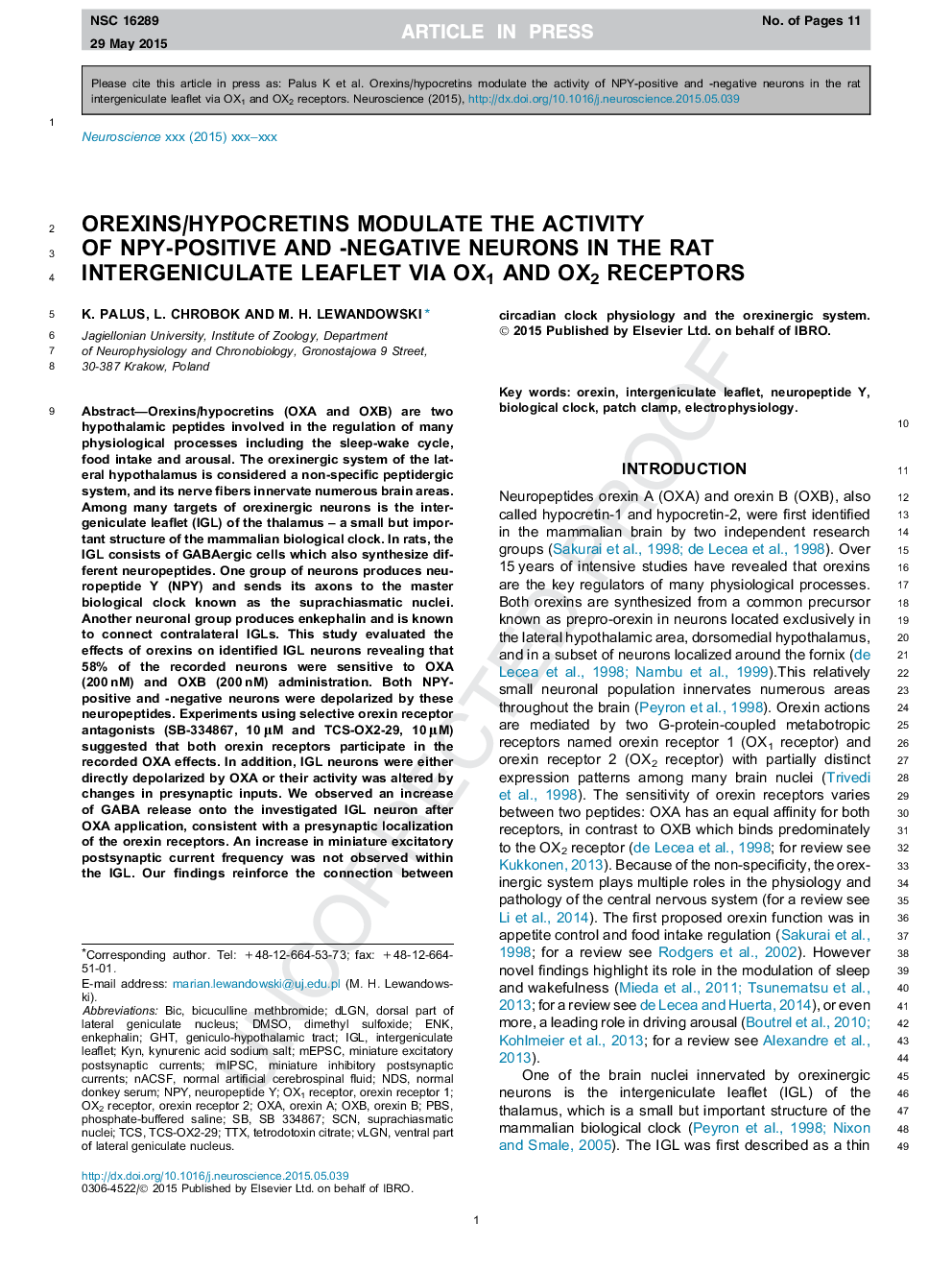| Article ID | Journal | Published Year | Pages | File Type |
|---|---|---|---|---|
| 6271946 | Neuroscience | 2015 | 11 Pages |
Abstract
Orexins/hypocretins (OXA and OXB) are two hypothalamic peptides involved in the regulation of many physiological processes including the sleep-wake cycle, food intake and arousal. The orexinergic system of the lateral hypothalamus is considered a non-specific peptidergic system, and its nerve fibers innervate numerous brain areas. Among many targets of orexinergic neurons is the intergeniculate leaflet (IGL) of the thalamus - a small but important structure of the mammalian biological clock. In rats, the IGL consists of GABAergic cells which also synthesize different neuropeptides. One group of neurons produces neuropeptide Y (NPY) and sends its axons to the master biological clock known as the suprachiasmatic nuclei. Another neuronal group produces enkephalin and is known to connect contralateral IGLs. This study evaluated the effects of orexins on identified IGL neurons revealing that 58% of the recorded neurons were sensitive to OXA (200 nM) and OXB (200 nM) administration. Both NPY-positive and -negative neurons were depolarized by these neuropeptides. Experiments using selective orexin receptor antagonists (SB-334867, 10 μM and TCS-OX2-29, 10 μM) suggested that both orexin receptors participate in the recorded OXA effects. In addition, IGL neurons were either directly depolarized by OXA or their activity was altered by changes in presynaptic inputs. We observed an increase of GABA release onto the investigated IGL neuron after OXA application, consistent with a presynaptic localization of the orexin receptors. An increase in miniature excitatory postsynaptic current frequency was not observed within the IGL. Our findings reinforce the connection between circadian clock physiology and the orexinergic system.
Keywords
TTXSCNPBSOXAmEPSCdLGNSB 334867mIPSCOrexin BOXBNDSNPYTCSBICOX1 receptortetrodotoxin citrateDMSOElectrophysiologyEnkenkephalinorexin AOrexinIGLvLGNminiature inhibitory postsynaptic currentsminiature excitatory postsynaptic currentsintergeniculate leafletKYNDimethyl sulfoxideBiological clocknormal donkey serumGhTPhosphate-buffered salineSuprachiasmatic nucleiPatch clampOrexin receptor 2orexin receptor 1Neuropeptide Y
Related Topics
Life Sciences
Neuroscience
Neuroscience (General)
Authors
K. Palus, L. Chrobok, M.H. Lewandowski,
